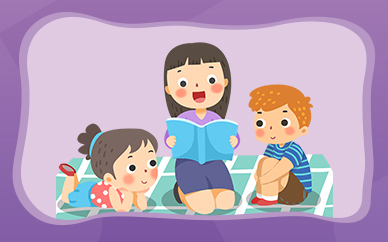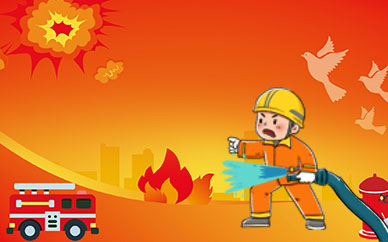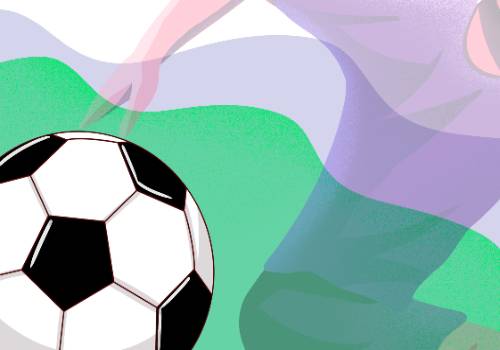八年级上英语第一课课件
下面小编为大家带来八年级上英语第一课课件,希望能帮助大家!如果这10篇文章还不能满足您的需求,您还可以在本站搜索到更多与八年级上英语第一课课件相关的文章。
篇1:八年级上英语第一课课件
八年级上英语第一课课件
八年级上英语第一课课件就是为大家带来的`Section A 1a—1c的课件——Where did you go on vacation?,欢迎各位老师下载使用。
 (资料图片仅供参考)
(资料图片仅供参考)
| 八年级上英语第一课课件 |
篇2:仁爱八年级上英语课件
仁爱八年级上英语课件
教学目标
1语言目标:描述健康问题的词汇,及如何根据别人的健康问题提建议。
2 技能目标:能听懂谈论健康问题的对话材料;能根据别人的健康问题提建议;能写出重点单词和重点句型,并能描述怎样对待健康问题。。
3 情感目标:通过开展扮演病人等活动,培养学生关心他人身体健康的品质。
通过本课的阅读,培养学生处理紧急事件的"基本能力,树立紧急事件时互相帮助的精神。
教学重难点
掌握情态动词should shouldn’t. 的用法
学习have的用法
教学工具
多媒体
教学过程
Step 1 Warming up and new words
1. Look at a picture and learn the parts of the body.
2. New words and phrases.
Step 2 Presentation
1a Look at the picture. Write the correct letter [a-m] for each part of the body.
___arm ___ back ___ ear ___ eye ___ foot
___hand ___ head ___ leg ___ mouth
___ neck ___nose ___ stomach ___ tooth
Step 3 Listening
1b Listen and look at the picture. Then number the names 1-5
Listen to the conversations again and fill in the blanks.
Conversation 1
Nurse: What’s the matter, Sarah?
Girl: I ___________.
Conversation 2
Nurse: What’s the matter, David?
Boy: I _________________.
Conversation 3
Nurse: What’s the matter, Ben?
Boy: I _________________.
Conversation 4
Nurse: What’s the matter, Nancy?
Girl: I _________________.
Conversation 5
Betty: What’s the matter, Judy?
Ann: She __________________.
Step 4 Speaking
1c Look at the pictures. What are the students’ problems? Make conversations.
Examples
A: What’s the matter with Judy?
B: She talked too much yesterday and didn’t drink enough water.
She has a very sore throat now.
A: What’s the matter with Sarah?
B: She didn’t take care of herself on the weekend. She was playing with her friends at the park yesterday. Then it got windy, but she didn’t put on her jacket. Now she has a cold.
Step 5 Guessing games
Guess what has happened to the students by using the important sentences.
Step 6 Listening
2a Listen and number the pictures [1-5] in the order you hear them.
2b Listen again. Match the problems with the advice.
Step 7 Speaking
2c Make conversations using the information in 2a and 2b
A: What’s the matter?
B: My head feels very hot.
A: Maybe you have a fever.
B: What should I do?
A: You should take your temperature.
Step 8 Role–play
Imagine you are the school doctor. A few students have health problems. Role-play a conversation between the doctor and the students.
2d Role –play the conversation
Step 9 Language points and summary
1. What’s the matter?
这是人们特别是医生和护士询问病人病情时最常用的问句, 意思是“怎么了?”其后通常与介词with连用。类似的问句还有:
What’s wrong? 怎么啦?
What’s wrong with you? 你怎么了?
What’s your trouble? 你怎么了?
What’s the trouble with you? 你怎么了?
What’s up? 你怎么了?
2. have a cold伤风, 感冒, 是固定词组
表示身体不适的常用词组还有:
have a bad cold 重感冒
have a fever 发烧
have a headache 头痛
have a stomachache 肚子痛, 胃痛
have a toothache 牙痛
Summary
1. 牙疼 have a toothache
2. 胃疼 have a stomachache
3. 背疼 have a backache
4. 头疼 have a headache
5. 喉咙疼 have a sore throat
6. 发烧 have a fever
7. 感冒 have a cold
8. 躺下并且休息 lie down and rest
9. 喝热蜂蜜茶 drink hot tea with honey
10. 喝大量水 drink lots of water
11. 看牙医 see a dentist
12. 量体温 take one’s temperature
13. 看医生 go to a doctor
Step 10 Exercises
根据上下文意思填空。
Mandy: Lisa, are you OK?
Lisa: I _____ a headache and I can’t move my neck. What ______ I do? Should I
_____ my temperature?
Mandy: No, it doesn’t sound like you have a fever. What _____ you do on the
weekend?
Lisa: I played computer _____ all weekend.
Mandy: That’s probably why. You need to take breaks _____ from the computer.
Lisa: Yeah, I think I sat in the _____ way for too long without moving.
Mandy: I think you should ____ down and rest. If your head and neck still hurt tomorrow, then go to a _______.
Lisa: OK. Thanks, Mandy.
翻译下列句子。
1. 你怎么了?我头痛。
2. 他怎么了?他发烧
3. 李雷怎么了?他喉咙痛。他应该多喝水。
4. 如果你的头和脖子明天仍然疼的话,请去看医生。
Homework
Make up a conversation between a doctor and a patient.
篇3:八年级上英语unit9课件
八年级上英语unit9课件
学习目标:
知识与能力:
(1)本课的单词与短语
(2)运用本单元过去时谈论自己崇拜的名人
过程与方法:通过自主学习、交流与展示活动,采用小组合作方式开展语言实践训练。情感态度与价值观:通过了解名人,培养积极进取,努力学习的良好品质。学习重难点:学习运用(一般过去时)表示介绍人物的词汇和表达。
学习过程:
一、课前预习:(教师寄语: No pains, no gains)
(一)整体感知教材内容。
(二)学习任务:
Task1 : 自主学习会读写本课单词及短语
1单词:ping-pong player _________ basketball player________ tennis player__________ soccer player___________ skater ____________ 冠军___________ 小提琴手_________ 钢琴家_________ 明星________ 高尔夫球手__________ 音乐家_______________ 出生记录打嗝喷嚏
2短语:篮球运动员____________________________出生_______________________
世界纪录__________________________停止打嗝______________________________
Task2:完成句子
1、他以什么而出名?______________________________________?
2、据说他是一个著名的演员。_________________________________.
3、他打喷嚏一直到1983年9月18日。__________________________.
4、他什么时候开始打喷嚏的?_______________________________?
二、预习检查与反馈
三、交流展示:小组合作交流,展示预习成果。(教师寄语:相信自己,一定能行!)
四、合作探究
1、be born, 意为“出生于”,be 多用过去式“was,或were”,born为动词bear的`过去分词,当表示出生日期时,后面可接介词in或on,表示出生地点时,后面常用介词in.
五、拓展训练
1、理解下列短语
(1)开始做某事___________ 停止做某事___________ 完成做某事____________
(2)写出下列词的现在分词、过去式
stop ___ _____ _ ________hiccup_ _________ __ ________sneeze _ ________ ____ ______ _
2、归纳谈论明星过去的情况用什么时态?
六、系统总结
__________________________________________________________________________________________________________________________________________________________________
七、课堂检测
(一)用所词的正确形式填空(6‘)
1、Jim ____ _______ (hiccup) for 2 days .
2、Where ___ ________(be) your father born?
3、Stop __ ______(talk),the teacher is coming.
4、When did you start ____________(learn ) English?
5、How many _________(play) in your team?
6、Listen! My mother ____ ____________(sneeze) . She has a cold. _
(二)句型转换(4‘)
1、He was born in 1985 (_提问) _____ _____ _ _________ ____________________?
2、He hiccupped for 69 years.(_提问) ______ ____ _ _________ _ _________ he __ ________?
篇4:八年级上英语unit8课件
八年级上英语unit8课件
一、教材分析
本单元是Go for it ( 上 ) Unit 8。主要围绕学校旅行和休假日这两个话题展开各种教学活动,并以此引出一般过去时的一般疑问句,否定句以及特殊疑问句等语言功能。本单元旨在创造一个放松、快乐的学习氛围,通过听、说、读、写、练来培养学生综合运用这些语言知识的能力。并让学生能在“模仿和实践”中学(learning by following and doing),通过让学生仔细观察、认真思考、角色扮演、积极参与的方式,先模仿老师的语言表达方式,能准确地用英语来表达自己做过的事情。
SectionA 1a-1c部分是本单元的第一课时,这一课时通过一些旅行活动的动词短语引出一般过去时的教学,重点培养学生的听说能力。一般过去时学生在七年级(下)已经有所接触,鉴于学生学得快忘得快的特点,本节课引导学生通过仔细观察、动手去做、自己总结来完成动词过去式的构成规则的学习。学好本课对本单元后面的学习起了很好的铺垫作用。
二、教学目标
1.语言目标
(1)Key words and expressions: aquarium, sharks, seals, souvenir, (go)went to the aquarium, (hang)hung out with sb., (see)saw some seals, (buy)bought a souvenir, (eat)ate some ice cream, (have)had a hamburger, some clever seals.
(2)句型结构
How was your school trip? It was interesting/fantastic…
What did you/they/she/he do…?I/We/They/She/He went….
Did you/they/she/he do…?Yes, I/we/they/she/he did./No, …didn’t.
Were there…?Yes, there were./No, there weren’t.
(3)语法
The structure of the Simple Past Tense. The past tense of the verbs.
2.语言技能
(1)能用一般过去时的各种形式进行准确的描述和表达发生过的事情。
(2)能掌握一般过去时态及一些表示具体动作的词组搭配,如:(go)went to the aquarium, (hang)hung out with sb., (see)saw some seals, (buy)bought a souvenir, (eat)ate some ice cream, (have)had a hamburger, some clever seals…等。
3.学习策略
通过本节课的教学,我要求学生能用一般过去时准确地表达曾经发生过的事情,学会讲故事。 通过小班化教室的布置,多媒体的使用,给学生创造一种身临其境(本课话题)中的感觉。
4.情感态度
通过本节课的学习,我的目的是培养学生合理安排时间,在周末、节假日多参加一些有益的活动;学会与人分享,培养团队合作精神,能积极乐观的表达自己曾经做过的.有意义的事情。
5.文化意识
了解中西方文化差异,学习西方人是如何表达或描述做过的事情。
三、教学的重、难点
基于上述对教材的分析,我确定本单元的教学重点为词汇、短语、动词过去式的变化规则和一般过去时的用法。
教学难点为一般过去时的句式结构,能在交际中准确地运用一般过去时描述或表达发生过的事情。
四、学情分析
根据初二学生的特点:学得快,忘得也快。再加上此年龄段学生生理和心理的特点——好奇心强,求知欲旺盛,愿意尝试。希望能得到他人的肯定。因此我在教学活动中,尽量引导他们自主学习,让他们参与到活动中来,有更多的机会尝试,通过师生、生生互动,合作学习,降低他们的学习难度,使他们体验到成功的喜悦。提高他们综合运用语言的能力,使各层次的学生都有所收获。
五、教学方法
1.教法分析
(1)一般过去时学生在七年级(下)已经有所接触,鉴于学生学得快忘得快的特点,本节课引导学生通过仔细观察、动手去做、自己总结来完成动词过去式构成规则的学习。而本单元的话题源自学生很感兴趣的话题——旅游,立足这一点,我充分利用学生已有的知识和生活经历,创设生活化的真实情境,引导学生在运用语言中学习语言,然后在学习新的语言知识后创造性地运用语言(学以致用)。
(2)开展多种类型的任务型活动,如卡片竞赛、小组表演、角色扮演、对话接轮等提供给学生合作交流的空间和时间,培养学生合作学习的精神,增强集体荣誉感。
2.学法指导
根据《英语课程标准》,把“培养学生学习英语的兴趣,树立自信心,培养良好学习习惯和形成有效策略,发展自主学习和合作精神”放在了首位。结合我校小班化教学特点——教室小、学生少、活动好(方便)、教师观察清,学生动(小组/集体活动,每个人都能真正动起来)的真,我从以下几个方面对学生进行学法指导。
(1)学习方法的指导
通过听、看、观察、模仿、操作、运用,培养学生记忆力、观察力、想象力,思维力及口语表达能力。以特别的座位形式(梯形座的拼凑)、生动的墙面图画(旅行画面)来调动学生的感官进行听说读写的训练。
(2)学习积极性的调动
整个教室布置格局给学生在学习过程中创造一种轻松、愉悦,积极互动的语言氛围,老师就像导演一样侧面指点一下,让演员们(学生)尽情的表演吧!
篇5:八年级上英语unit5课件
八年级上英语unit5课件
教学目标
一、知识与技能
1、掌握重点词汇和句型。
2、了解电视节目的名称。
3、能用学到的句型陈述自己的"看法。
二、过程与方法
采用目标和直观教学法,调动学生的积极性,引导他们积极参与课堂。
三、情感、态度与价值观
学会谈论流行文化,了解各类电视节目的名称和自己的喜好。
教学重点
1.掌握重点词汇和句型。
2.能运用所学单词、短语及句型询问并谈论自己的看法。
教学难点
如何运用所学单词、短语及句型询问并谈论自己的看法。
教法导航
直观展示法,情境创设法。学法导航
模仿,讨论与交流。教学准备图片,多媒体。
教学过程
Step 1 Greetings
Greet the students as usual
Step 2 Presentation
Ask: Do you like watching TV ? What kind of TV show do you like ? And then show some pictures and talk about TV shows in English
Step 3 Practice1a
Ask one student to read and translate the TV shows and then ask the class to match them with the pictures、Finally ask some students to report their answers
Step 4 Listening
Ask students to read the shows in the box、Make sure they know the meaning of the shows、Play the recording for the students to listen and number the shows 1-4、Play the recording again、Check the answers with the students.
Step 5 Pair work
Let students look at the pictures in the box、Then explain the meaning of each expression to the students、Let students read the conversation after the teacher、Then let students make their own conversation using the shows and expressions in the box、Let some pairs ask and answer about the shows.
Step 6 Listening
2a, Read the shows in the box of 2a、Ask students to remember the information、Play the recording for the students to listen and number the TV shows 1-5、Play the recording again to check the answers.
2b, Let students read the sentences below、Explain some main sentences for the students、Make sure they know what to do、Play the recording for the students to write the correct words in the blanks、Play the recording again to check the answers.
Step 7 Pair work
Let students ask and answer questions about the TV shows in 2a、They can use the information that is true for them、Let students read the conversation after the teacher、Explain some main points for the students、Students act the conversation in pairs、Ask some pairs to act out their conversations.
Step 8 Homework
1、Remember the new words and expressions in this period、2、Role-play the conversation in 2c after class
课堂作业
英汉互译
talk show 2、soap opera 3、sports show 4、sitcom 5、game show 6、talent show 7、news 8、你想看什么?9、你认为谈话节目怎么样?10、我不介意。
参考答案:
1、谈话节目2、肥皂剧3、体育节目4、情景喜剧5、游戏节目6、才艺展示7、新闻8、What do you want to watch? 9、What od you think of talk shows? 10、I don’t mind them、板书设计
篇6:八年级上英语第七单元课件
八年级上英语第七单元课件
八年级上英语第七单元课件
[设计理念]
本节课我主要运用任务型教学法及情景交际法,并采用多媒体进行教学。因为兴趣是最好的老师,为了激发学生的学习兴趣,我设计了生动形象的图片及动画来吸引学生的注意力。按照任务型教学的.基本理念,课堂任务的设计选择贴近学生实际生活的话题内容。提供符合真实生活的学习情景,通过自主,合作,探究培养学生主动学习英语的兴趣,自学能力和合作能力。让学生多说英语,在用中学,学以致用。
[教材分析]
教学内容为“Go for it ”新目标英语八年级上册第七单元Section A。学习内容主要体现在以下3点:
1. 学习有关制作奶昔的单词:milk, shake, blender, turn on, cut up, peel, pour,into
2. 学习祈使句:
(1) Peel three banans.
(2) Cut up the banans.
(3) Pour the milk into the blender .
3. 掌握语法点:Learn to describe a process of making a kind of food; learn to follow instructions
[学生分析]
1. 利用多媒体课件上英语课,学生视听感受明显,表现出极大兴趣,在欣赏和享受中学习,学习效果很明显。
2. 学生以前已经学过各种水果的表达,首先让学生猜出以前学过的水果名,然后引出本单元的主要内容如何制造香蕉奶昔。
[教学目标]
1. 知识与能力:Learn to describe a process of making a kind of food; learn to follow instructions.
2. 过程与方法:Guessing and listing information step by step, get the students to do pairwork and fill in the charts.
3. 情感态度与价值观:It’s helpful for the students to have a healthy diet habit and it can arose their interest in learning English.
4. 教学重点:
(1) Learn to describe a process and follow instructions
(2)Learn the structures and usages of imperative sentences.
(3)Review and consolidate the usage of countable and uncountable nouns.
5. 教学难点:
(1)Learn to describe a process and follow instructions.
(2)The usage of countable and uncountable nouns.
6. 教法学法:
Discussing method. Listening method. Oral practice method
7. 教具学具:
A tape recorder. Ingredients. Course ware.
[教学过程]
Step 1 Lead-in
T:Now Let"s play a guessing game .We have learned some fruits. (Show them you are waiting.)
S1 :apple?
S2:orange?
T:Yes ,You are right.give him a card. [ 1.利用学生的心理和想象空间,调动学生的学习兴趣,增进师生间的情感。2、由猜词引入本单元,既复习了旧知识又能调动学生的学习热情。]
Step 2 Revision
1. Revise some words about fruits.
2. Show some photos about fruits .[1、复习已学内容,自然延伸到新课学习,起到承上启下的作用。2、开展竞赛活动,既可调动课堂气氛,又可提高求知欲望,一举两得。]
Step 3 Pre-task
1. Learn some new words about how to make a banana milk shake .
2. Do Section A-1a.(让学生初步了解制作奶昔的所有过程)
3. Get students to listen and put the instructions in the correct order.[1.充分利用课本资源和网络资源,进行词汇教学,词不离句,形散而神不散。2.让学生归纳总结语法知识点,因势利导,有利于开启思维,体现以学生为中心的教学特点。]
Step 4 Listening
1. Listen to the tape and number the pictures in 1b.
2. Check the answers.
[听力训练既是对知识的巩固,也为下一步的任务输出提供了输入材料。]
Step 5While-task
1c Pairwork: First show the slide, say the steps of making a banana milk shake together, then work in pairs. Ask some students to say the steps according to the pictures.
[1.这一环节是基于听说训练之上,培养学生说的能力,在课堂内强化目标语言。2.对教材进行重新整合,既有效地控制了难易梯度,又不失时机地为学生创造了互相学习的机会,充分调动了学生的创造性思维和发散性思维能力。]
篇7:八年级英语课件
八年级英语人教版课件
学习目标:
知识目标:fishing, rent, famous, take a vacation, Greece, Spain, Europe, leave, countryside, nature, forget, finish, tourist, be famous for
He thought about going to Greece or Spain, but decide on Canada.
I just finished making my last movie.
能力目标:提高用现在进行时态谈论将来的计划的能力。
情感目标:培养合作意识及计划意识。
学习重难点:感知现在进行时表达将来意味:
学习过程:
一、预习导学
1.完成下列单词或短语。
___________观光;旅游___________著名的;出名的__________ 欧洲 __________ 农村;乡村_____________大自然__________忘记________结束____________游客
2.试译下列句子。
他原想去希腊或西班牙,但最后决定去加拿大。
__________________________________________________________________________.这次我想做些不同的事情。
_________________________________________________________________.
我知道那儿有许多说法语的人。
_________________________________________________________________.
二、自主学习
1. leave
动词,“离去;出发;忘带;把……留给;使……处于(某种)状态”。如:
He left home in a hurry.
He left his son a lot of money when he died.
Please leave the door open.
【归纳拓展】
leave for 动身去……
leave sb by oneself 把某人单独留下
leave…behind 忘带;留下;把……落在后面
【辨析活用】
leave / forget
两者都和“忘记”有关,但含义和用法有所不同。
leave:意为“把某物遗忘在某处”,其后一般要接具体的地点。如:
He left his homework at home.
forget:意为“遗忘某物或忘记做某事”,是指忘记一件具体的东西,其后一般不可以有具体的地点。常用短语为forget to do/ doing sth. 如:
Don’t forget to turn off the lights when you leave.
【即景活用】
(河北模拟)这个孩子太小了不应该把他单独留在家里。
The child is so young that you can’t ________ him _________ ________ at home.
2. different
形容词,“不同的;有区别的”。如:
My coat is different from yours.
【归纳拓展】
派生词:difference n. 差异;差别;不同 differently adv. 不同地
短语:be different from 与……不同 be different in 在……(方面)不同
make no difference to 对……不起作用;对……没有影响
【即景活用】
These coats are different _________ size.
A.from B. of C. to D. in
3. famous
形容词,“著名的";出名的”,同义词为well-known. 如: The city is famous for its silk.
【辨析活用】
be famous for +出名的原因
be famous as + 出名时的身份、产地
Jackie Chan is famous for his action movies.
Jackie Chan is famous as a movie star.
三、合作探究
1.2c Pairwork
2.3a Read the magazine article. What are Ben Lambert’s vacation plans? Write the number of each picture next to the correct activity.
四、拓展创新
1.3c. Write an article.
2.4. Survey.
五、达标检测
(一)单项选择
( ) 1. They’re going to San Francisco ______ July 7 _____ next month.
A. on, in B. in, on C. in, / D. on, /
( ) 2. —______ is he doing for vacation? —He is going to Hawaii to surf.
A. What B. Where C. When D. How
( ) 3. What’s it ______ there?
A. like B. look like C. likes D. liking
( ) 4. Can I ask you ______ questions ______ your vacation plans?
A. any, about B. some, with C. any, with D. some, about
( ) 5. I want to spend time ______ my grandfather ______ the countryside.
A. with, in B. on, in C. in, in D. on, with
( ) 6. Today is my son’s birthday. I’m making _____ for him.
A. anything nice ; B. something nice C. nice anything D. nice something
( ) 7. She ______ 8,000 yuan on the computer yesterday.
A. spent B. cost C. take D. paid
( ) 8. What should we ______ us when we go hiking?
A. bring with B. take to C. take with D. bring to
( ) 9. Do you have ______ to tell us?
A. something new B. new something C. anything new D. new anything
( ) 10. —______ do you watch TV every week? —About three hours.
A. How often B. How long C. What time D. How many
( ) 11. —What’s your brother like? —_______.
A. He likes playing soccer B. He likes all of us
C. He’s short but fat D. He’s very well
( ) 12. All of us are ______ in the ______ film.
A. interesting, interested B. interested, interesting
C. interesting, interesting D. interested, interested
(二)用所给单词的适当形式填空
1. Dalian is a beautiful place __________ ( go ) sightseeing.
2. It’s twelve o’clock. The children ___________ ( have ) lunch in the cafeteria.
3. This Sunday we are going bike r__________ in the park. How about you?
4. Yao Ming is a f_______ basketball player. Lots of people like ______ ( watch ) him play.
5. My sister thought about __________ ( babysit ) her pet dog.
6. He didn’t leave u_________ his mother came back.
7. Do you plan __________ ( take ) a vacation in Hawaii?
8. The book is so good, I can’t wait __________ ( read ) it at the moment.
9. You should finish _________ ( make ) these kites this afternoon.
(三)完成句子
1. 假期你打算做什么? _________ _________ you _________ _________ vacation?
2. 我听说泰国是个观光旅游的好地方。
I hear Tailand is a good place ________ ________ ________.
3. 明天他要动身前往意大利。 He ________ ________ _________ Italy tomorrow.
4. 昨天你们什么时间打扫完教室的?
When ________ you ________ ________ the classroom yesterday?
5. 你有什么重要的事要告诉我吗? Do you have _________ __________ to tell me?
6. 明天是星期天,去钓鱼怎么样?
It’s Sunday tomorrow. _________ _________ _________ ________?
7. 我迫不及待地打开妈妈送的礼物。
I _________ __________ __________ __________ the present Mum gave me.
篇8:八年级英语课件
Unit4 What’s the best theater?
(Period 1形容词和副词的`最高级)
一、教学目标
1. 知识目标:形容词和副词的最高级的意义和用法
2. 能力目标:通过个人活动与小组活动,使学生熟练掌握形容词和副词的最高级用法。
3. 情感目标:通过自主学习和合作学习,使学生形成学习英语语法的兴趣,并获得一定的学习成就感。
二、教学重点、难点:
形容词和副词的最高级用法。
篇9:八年级英语课件
教学流程(Teaching process)
Step1:让学生观察三个苹果,引导学生描述这三个苹果。
This apple is big.
This apple is bigger than that one.
This apple is the biggest of all..
Step2:[利用课件]总结The Superlative forms of Adjectives and Adverbs (重点为Adjectives)。
1、This apple is the biggest of all (big)
2、This computer is the most expensive of all. (expensive)
3、The weather is the worst. (bad)
4、This car is the best of the three.(good)
5、Blue Moon Cinema is the closest to my home.(close)
6、Red star Cinema is the cheapest. (cheap)
7、Super Cinema is the most popular.(popular)
8、Blue Moon Cinema has the most comfortable seats.(comfortable)
Step3:归纳形容词最高级变化规律(副词的变化随后会触类旁通) ①原级 ②原级 ③原级 ④原级 tall large big outgoing calm late thin beautiful short fine fat difficult wild nice hot athletic quiet serious small interesting high important
popular
Step4用最高级描述班级之最:
eg1:Wen Gang is the tallest and Wang Fei is the nicest .
eg2: Li Ping studies best and Pan Fei runs fastest.
Step5:(小组协作)运用动画图片描述中国之最和世界之最:
The Chang jiang River(the longest ),Qumulangma(the highest ).Taiwan Island.( the biggest ), Xing Jiang province(the largest population).
小结:
作业布置:
用最高级描述你的家人之最。
篇10:八年级上物理课件
八年级上物理课件
●教学目标
知识与技能:1.知道参照物的概念;2.知道物体的运动和静止是相对的。
过程与方法:能用实例解释机械运动及其相对性。
情感态度与价值观:认识运动是宇宙的普遍现象,运动和静止是相对的,树立正确的科学观。
●学习重点
1.机械运动的概念。
2.研究物体运动的相对性。
●学习难点
1.参照物的概念
2.认识物体运动的相对性。
3.用实例解释机械运动。
●教学方式
讲解法、讨论法。
●教学用具
视频资料,玩具车、玩具人
●教学过程
一、创设情境,引入新课(5 in)
〖师 前段时间我们学习了第十章内容,认识到多彩的物质世界,知道了宇宙万物都是由物质组成的,物体都有质量,不同物质的密度不同,那么这些物质存在的状态如何呢?
[讨论]
[总结1] 今天,我们研究物体是运动的还是静止的问题。为什么它们会运动或静止?(板书本章课题)
[总结2] 我们首先看物体的运动该如何描述?(板书本节课题)
二、进入新课,科学探究
(一)机械运动(10in)
1.现象
[问题] 大家观察周围的物体,你认为它们哪些是运动的,哪些是静止的?
[回答](1)行驶的汽车是运动的;
(2)走路的人是运动的;
(3)飞出的足球是运动的;
(4)地球是运动的;
(5)分子是运动的;
(6)黑板是静止的;
(7)教室外面的树是静止的;
(8)公路是静止的;
(9)大桥是静止的;
也可能回答出一些其他的问题:
(1)星星是静止的;
(2)太阳是静止的;
[分析](1)我们身边有运动的物体。如行驶的汽车、跑步的人们、飞行的足球等。
(2)宇宙是运动的。小学科学课上学过,地球本身在自转,还绕太阳公转,且整个太阳系都在运动。同理,银河系也是运动的,那么宇宙同样也在运动,所以从宏观上看,宇宙上的所有物体都是运动的。
(3)微观分子是运动的。组成物质的最小微粒是分子,这些分子也是在运动的。
[总结] 世界上一切物体都是运动的。
2.概念
[问题] 物体运动的特征是什么?为什么说它们是运动的?
[观察] 大家观看[播放视频1]:运动的自然界。
[总结]
凡是运动的物体,它们的位置在发生着变化,所以我们把物体位置的变化叫做机械运动。(板书)
(二)参照物(15 in)
1.概念
[问题] 既然自然界中所有的物体都是在做机械运动,可为什么我们还常说××物体是静止的"呢?如黑板是静止的,房屋、树木是静止的等等。
[讨论] 我们常说物体静止也是为了研究问题方便,如果都运动,我们也不容易为物体定位了,房屋、树木说它们静止是因为在一段较长的时间内,它在某一位置是固定不动的,即它相对于旁边的房屋来说,它们的位置没有发生变化;判断物体是否运动时,我们也常看它与其他物体间的位置是否发生了改变,所以我们平时说物体是静止还是运动,都是以一个物体做标准而言的。
[总结] 参照物:说物体是运动还是静止,要看是以哪个物体做标准,这个被选做标准的物体叫做参照物。
[播放视频2] 观察哪辆列车在运动?它们是以什么物体做参照物来研究的?
2.特点
[问题](1)对某一运动状况的判断,所选的参照物只有一个吗?
(2)选择不同的参照物,得出的物体运动状况一定相同吗?
[分析]当观察一小汽车在公路上驶过时,判断它是运动的,我们可以选地面为参照物,也可以选路边的房屋做参照物,还可以选树木做参照物,它们都能得出汽车是运动的结论,所以对某一运动状况的判断,所选的参照物并不只有一个。
如果我们选择不同的参照物,如选汽车司机中靠椅,则会判断小汽车是静止的,所以选择不同的参照物,得出的物体运动情况不一定相同。
3.练习
(1)已知参照物判断物体的运动情况。
①某车站并排停放着两列待发的列车甲和乙,过了一会儿,甲列车内一个人看见窗外树木向东移动起来,然而,乙列车内的人通过窗口看甲车是静止的,如果以地面为参照物,上述表明 。
②平直公路上,甲、乙、丙三人骑车匀速向东行驶。甲感觉顺风,乙感觉无风,丙感觉逆风,则当时刮的是 风。甲、乙、丙三个骑车速度最大的是________,最小的是 ________ 。
(2)已知物体的运动情况判断所选的参照物。
①(2005年温州中考题)诗人曾写下这样的诗句:“人在桥上走,桥流水不流”。其中“桥流水不流”,诗人选择的参照物是( )
A.桥 B.河岸 C.水 D.岸上的树
②在一条东西取向的平直公路上,甲、乙、丙三辆汽车同时向东行驶,乙知甲车比乙车快,比丙车慢,则以 为参照物时,三辆汽车均向西行驶。
(三)运动和静止是相对的(10 in)
[问题] 同一情况,如果选择不同的参照物,会得出物体的运动状态是不同的。这说明了什么问题?
[讨论]
[结论]说明物体的运动和静止是相对的。
[图片展示]空中加油机;高空观缆车。
[播放视频4]航天器的起飞和降落。
[播放视频5]联合收割机。
[播放视频6]生活中运动现象举例。
[播放视频7]同步卫星,火箭起飞和降落。
[类比]1.说某一同学个子高,是不准确的,应该说,它与谁相比个子高,同理说某一位同学矮,也是不科学的。
2.某人问路,到某地要用多长时间,该人不答,待问路人不耐烦开始走时,该人才说1小时左右,问路人不解,该人答曰:不知你走多快,如何判断用多长时间呢?这里的参照就是走路人的快慢,可见,我们表达话语时,一定要说话严密些。
(四)思考与练习
三、小结
这节课我们学习了如何描述物体的运动,虽然运动是绝对的,但我们平时为了研究方便,仍然说某个物体是静止的,为什么?就是因为平时我们判断某个物体的运动与静止时选择了一个作标准的物体,这个物体我们叫做参照物。
对某一个物体的运动状况而言,参照物的选择不止一个,但选择不同的参照物,得出的物体的运动状态却并不一定相同,所以物体的运动和静止是相对的。为了叙述严密,说某物体是运动还是静止时,一定要加以参照物。如果没加,一般都是以地面为参照物而言的。
四、作业布置
★ 八年级英语课件
★ 八年级英语上册课件
★ 八年级下册英语课件
★ 八年级上册英语课件
★ 新目标八年级英语课件
★ 新目标英语八年级上教学计划范本
★ 八年级下册英语第十单元课件
★ 英语课件
★ 英语课件下载
★ 八年级上学期英语教师教学计划
最近更新
- 八年级上英语第一课课件2023-06-07
- 天天热推荐:小学六年级上册语文爷爷的芦笛2023-06-07
- 百事通!三部门联合部署推进打击整治盗采海2023-06-07
- 海关总署:前5个月我国一般贸易进出口11万2023-06-07
- 当前视讯!2023年秦岭野生动物园高考生免费2023-06-07
- 全球观察:太原五一自驾游去哪里好玩(周边2023-06-07
- 港股异动 | 联邦制药(03933)涨超4%创逾22023-06-07
- 全省基础设施项目建设产需推介会召开2023-06-07
- 快讯丨河北省8个重点文化产业项目精彩亮相2023-06-07
- 环球视讯!2023年高考方城县交通管制时间+2023-06-07
- 2023开封关于规范完善城乡居民门诊统筹工作2023-06-07
- 环球通讯!大话骰技巧套路_大话骰技巧2023-06-07
- 天天热议:卡黛尔的护符有什么用_卡黛尔的护2023-06-07
- 环球百事通!超薄防火涂料一平方多少材料2023-06-07
- 天涯或许难再见|世界时快讯2023-06-07
- 女乒主力仅孙颖莎参加挑战赛,重点考察莎头2023-06-07
- 焦点热文:爆枪英雄好感度赠送表_dnfnpc好2023-06-07
- 中国台球协会:将从严处罚旅英涉赌球员 开2023-06-07
- 男子8+2小复式揽双色球598万 奖金全交爱人2023-06-07
- 148期何飞快乐8预测奖号:最新胆杀推荐-天2023-06-07
- 血压低的人吃什么好得快_血压低的人吃什么2023-06-07
- 问一首歌词有say_hello的英文歌2023-06-07
- 二十不惑三十而已是什么意思 动态焦点2023-06-07
- 热点在线丨券业场浙商证券原保代王建刚加盟2023-06-07
- 国新健康:融资净买入83.31万元,融资余额62023-06-07
- 西山科技上市首日涨幅超40% 募资近18亿元2023-06-07
- 今头条!多家媒体发声力挺A股:增强对市场2023-06-07
- 扫黑风暴混沌铺老板娘扮演者于京京_扫黑风2023-06-07
- 昱能科技创新阳台光伏应用,昱电宝构建DIY2023-06-07
- 当前要闻:咸宁积极开展“政路企”合作,优2023-06-07
 八年级上英语第一课课件
八年级上英语第一课课件  百事通!三部门联合部署推进打击整治盗采海砂违法犯罪专项行动
百事通!三部门联合部署推进打击整治盗采海砂违法犯罪专项行动  当前视讯!2023年秦岭野生动物园高考生免费吗
当前视讯!2023年秦岭野生动物园高考生免费吗  港股异动 | 联邦制药(03933)涨超4%创逾2年半新高 司美格鲁肽注射液体重管理适应症临床试验此前获批
港股异动 | 联邦制药(03933)涨超4%创逾2年半新高 司美格鲁肽注射液体重管理适应症临床试验此前获批  全省基础设施项目建设产需推介会召开
全省基础设施项目建设产需推介会召开  环球视讯!2023年高考方城县交通管制时间+路段
环球视讯!2023年高考方城县交通管制时间+路段  环球通讯!大话骰技巧套路_大话骰技巧
环球通讯!大话骰技巧套路_大话骰技巧  天涯或许难再见|世界时快讯
天涯或许难再见|世界时快讯  焦点热文:爆枪英雄好感度赠送表_dnfnpc好感度有什么用
焦点热文:爆枪英雄好感度赠送表_dnfnpc好感度有什么用  男子8+2小复式揽双色球598万 奖金全交爱人打理
男子8+2小复式揽双色球598万 奖金全交爱人打理  血压低的人吃什么好得快_血压低的人吃什么好
血压低的人吃什么好得快_血压低的人吃什么好  二十不惑三十而已是什么意思 动态焦点
二十不惑三十而已是什么意思 动态焦点  国新健康:融资净买入83.31万元,融资余额6.86亿元(06-06)
国新健康:融资净买入83.31万元,融资余额6.86亿元(06-06)  今头条!多家媒体发声力挺A股:增强对市场的信心、决心和耐心
今头条!多家媒体发声力挺A股:增强对市场的信心、决心和耐心  当前要闻:咸宁积极开展“政路企”合作,优化物流营商环境
当前要闻:咸宁积极开展“政路企”合作,优化物流营商环境  网络用语酷盖是什么意思_酷盖是什么意思啊酷盖可以形容女生吗-每日热点
网络用语酷盖是什么意思_酷盖是什么意思啊酷盖可以形容女生吗-每日热点  户外经济狂飙-今日热搜
户外经济狂飙-今日热搜  总资产周转率大于1说明_总资产周转率大于1-天天新视野
总资产周转率大于1说明_总资产周转率大于1-天天新视野  今日热议:坦克 5月劲销10429辆,蝉联中国硬派越野SUV销量冠军!
今日热议:坦克 5月劲销10429辆,蝉联中国硬派越野SUV销量冠军!  世界动态:85后“掌舵”百亿级新材料项目 星源材质南通基地董事长刘瑞致力打造全国最大隔膜出口基地
世界动态:85后“掌舵”百亿级新材料项目 星源材质南通基地董事长刘瑞致力打造全国最大隔膜出口基地
- 八年级上英语第一课课件
- 百事通!三部门联合部署推进打击整治盗采海砂违法犯罪专项行动
- 当前视讯!2023年秦岭野生动物园高考生免费吗
- 港股异动 | 联邦制药(03933)涨超4%创逾2年半新高 司美格鲁肽注射液体重管理适应症临床试验此前获批
- 全省基础设施项目建设产需推介会召开
- 环球视讯!2023年高考方城县交通管制时间+路段
- 环球通讯!大话骰技巧套路_大话骰技巧
- 天涯或许难再见|世界时快讯
- 焦点热文:爆枪英雄好感度赠送表_dnfnpc好感度有什么用
- 男子8+2小复式揽双色球598万 奖金全交爱人打理
- 血压低的人吃什么好得快_血压低的人吃什么好
- 二十不惑三十而已是什么意思 动态焦点
- 国新健康:融资净买入83.31万元,融资余额6.86亿元(06-06)
- 今头条!多家媒体发声力挺A股:增强对市场的信心、决心和耐心
- 当前要闻:咸宁积极开展“政路企”合作,优化物流营商环境
- 网络用语酷盖是什么意思_酷盖是什么意思啊酷盖可以形容女生吗-每日热点
- 户外经济狂飙-今日热搜
- 总资产周转率大于1说明_总资产周转率大于1-天天新视野
- 今日热议:坦克 5月劲销10429辆,蝉联中国硬派越野SUV销量冠军!
- 世界动态:85后“掌舵”百亿级新材料项目 星源材质南通基地董事长刘瑞致力打造全国最大隔膜出口基地
- 王广大:简政放权,便民高效服务群众
- 京东爆发“手抖门”背后 金融账户信息说改就改怎么破?
- 郑州绿都澜湾支招购房者假离婚 骗取首套房优惠政策
- 日评论家发表“韩国亲日说” 引发电视节目大辩论
- 读卡器是什么设备_读卡器是什么
- 安徽省霍山县市场监管局开展儿童用品安全主题宣传活动 实时焦点
- 图雷回顾6比1大胜曼联:我们当着弗格森的面扇了曼联一耳光
- 枣强中学:让我们笑“赢”高考!_当前热文
- 泰安高新区新一代信息技术产业链企业四维卓识荣获天津市科学技术进步一等奖
- 停息挂账后信用卡还可以使用吗?信用卡停息挂账好申请吗?
- 超半数公司一季度净利同比下滑 26家游戏股Q1成绩单背后藏了什么?
- 海河流域今日入汛 海委及流域各地迅速进入汛期工作状态
- 货运一点通手机版下载_56888全国物流一点通-时快讯
- 赛摩智能(300466):该股换手率大于8%(06-01)
- 国家电子政务外网信息与网络安全培训在杭州举办-全球速讯
- 世界资讯:大连大樱桃成熟期时间表2023
- 全球快消息!杨桥镇志愿服务队(关于杨桥镇志愿服务队的简介)
- 2-3分钟演讲稿多少字_3分钟演讲稿大概多少字
- 加盟店负增长净利润连年大降,海澜之家请张颂文能否破解“老化”难题 每日热议
- 今日最新!2023湖北襄阳东津新区中小学及幼儿园教师招聘资格复审公告




